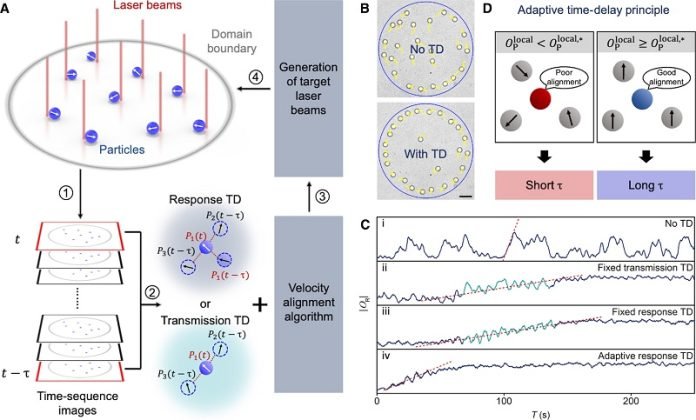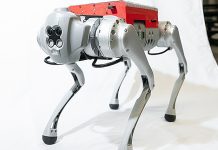
Imagine tiny robots working together like a school of fish or a colony of ants. This isn’t science fiction anymore; it’s what researchers at The University of Texas at Austin are developing right now.
They’re creating “smart swarms” of microscopic robots that can do tasks better together than they could alone, inspired by the natural world where animals act in groups to be smarter and stronger.
Yuebing Zheng, an associate professor, and his team have been studying how animals like birds and fish move together so seamlessly. They wondered if they could make tiny machines do the same.
The idea?
These little robots could tackle big problems if they worked in a team, just like animals do.
Last year, Zheng’s team introduced the world to these mini robots, showing how they could move together.
They’ve taken it a step further now, with new research that makes these robots even smarter as a group. They’ve added something called “adaptive time delay” to the robots.
This fancy term just means each tiny robot can adjust its movement based on what’s happening around it. So, if something changes in their environment, the whole group can respond quickly without getting all messed up.
This whole project is powered by light. Yes, light! The researchers have found a way to guide these tiny robots using controllable light patterns.
It’s like using a flashlight to tell them where to go, but much more advanced. This light guidance was the key to making their latest improvement, helping the robots work even better together.
What’s really cool is that this could change the way lots of things work, not just tiny robots. Imagine drones that can fly together without bumping into each other or cars and trucks on the highway moving in perfect harmony.
These robots don’t need someone or something telling each one what to do; they figure it out together, saving a lot of energy and data.
On their own, these nanorobots have a hard time dealing with complicated places, like moving through blood vessels or cleaning up polluted water. But when they move as a team, they can navigate these tricky environments much better, avoiding obstacles and reaching their target efficiently.
The team has tested this out in the lab, in simple conditions, and it worked! The next steps are to see if the robots can handle moving liquid and then, eventually, work inside a living organism.
This could lead to some amazing things. For example, these robot swarms could deliver medicine right where it’s needed in the body, sneaking past the body’s defenses.
Or they could clean up pollution in water by working together to make sure they don’t miss a spot.
It’s an exciting time for science, with these tiny robot teams showing us a new way to solve problems by looking to nature for inspiration.



